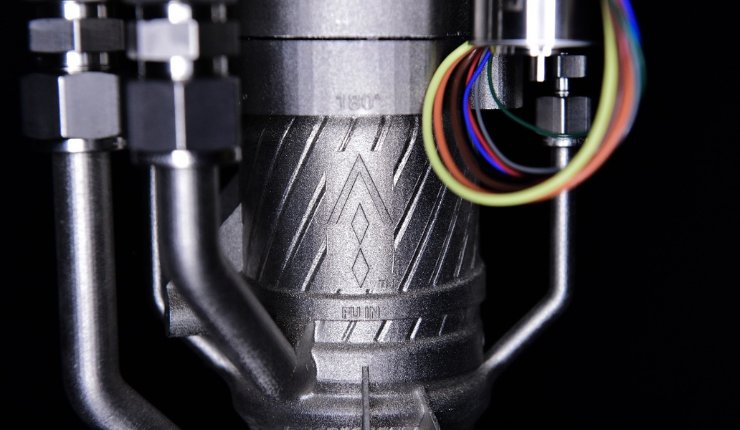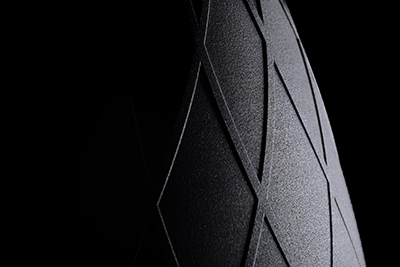Nominate now for the 3D Printing Industry Awards 2023.
Aerospace propulsion system developer Agile Space Industries is pursuing certification of Ni625 powder from Industrial 3D printing materials manufacturer 6K Additive. Agile is hoping to use this material for customer space applications including critical rocket parts.
Being certified for use at Agile’s manufacturing facility, the first parts to be 3D printed using the Ni625 powder will be used in Agile’s A2200 bipropellant hypergolic engine. These engines will be used on a lunar lander for a mission to the moon.
“By weight, 85% of our engine components are additively manufactured, meaning we rely heavily on AM powders that can withstand the extreme temperatures and forces generated during take-off and flight,” explained Kyle Metsger, Director of Additive Technology at Agile Space Industries.
“6K Additive allows us to additively manufacture using high-quality powders that are required for our critical applications, while also helping us meet our environmental goals through their recycling program and sustainably manufactured powders. 6K Additive can deliver extremely consistent powder that allows our production line to run the long build times required for these complex components.”

Agile Space Industries’ 3D printed rocket engine
Agile’s A2200 engines are powered by a pressure-fed hypergolic bipropellant which does not require ignition as the hydrazine derivative fuel, M20, and MON3 oxidizer combust on contact. With 85% of the engine components produced using additive manufacturing, the engine has been designed to produce 500-lbf of thrust while weighing just 5.9kg.
The A2200 engine has also been developed to provide maximum performance on demanding lunar missions, with a specific impulse of more than 318 seconds. The engine employs an integral pintle sleeve throttling mechanism, making it capable of deep throttling. This is said to provide a smooth ride and fine control for a variety of missions.
Additionally, the engine is capable of throttling from 50 to 100% thrust in under 650 milliseconds. 6K Additive claims that this makes the engine ideal for heavily demanding manoeuvring sequences required during lunar missions.

Whilst traditional development cycles for aerospace components can take over two decades, 3D printing has reportedly allowed Agile to cut its development time to just 12 months.
“A year-long development cycle still sounds like a very long time in many industries, but we are showing the primes in the aerospace industry what the future looks like. Moving to the larger TruPrint 5000 machine gave us the ability to qualify the new parameters for the machine and material simultaneously. In this way, AM allows us to be ‘Agile’ in name and practice,” commented Metsger.
6K Additive’s President Frank Roberts has also highlighted the sustainability aspect of this partnership. “The fact that we can enable space exploration while continuing to lead the way with sustainability at home on Earth is the best of both worlds. Agile has a cradle-to-grave mentality around its products, and having 6K Additive supply the company with high-quality, sustainably produced Ni625 and provide an established waste stream to help with its environmental stewardship speaks to our mission of going beyond expectations for our customers,” explained Roberts.

3D printed rocket engines
3D printed space rocket engines are nothing new. Earlier this year, Edinburgh-based private rocket manufacturer Skyrora announced that it had begun full-duration testing to qualify the updated design of its 3D printed 70kN rocket engine. The rocket engines were 3D printed using Skyrora’s Skyprint 2 3D printers, reportedly cutting production times by 66% and costs by 20%.
Once completed, the testing will mark a notable milestone in Skyrora’s contract under the European Space Agency (ESA)’s Commercial Space Transportation Services and Support Programme, also known as Boost!
“The new engine technology developed by Skyrora’s engineers and the commitment to a sustainable design are a testament to the innovation taking place in the UK space sector,” commented Skyrora CEO and Founder Volodymyr Levykin.
Elsewhere, Australian heat transfer specialist Conflux Technology partnered with German space rocket manufacturer Rocket Factory Augsburg to embed 3D printed heat exchangers into an orbital rocket. The heat exchanger components are produced using Conflux Technology’s Monel K 500 metal alloy material in conjunction with EOS’s M300-4 Direct Metal Laser Sintering (DMLS) technology.
Subscribe to the 3D Printing Industry newsletter to keep up to date with the latest 3D printing news. You can also follow us on Twitter, like our Facebook page, and subscribe to the 3D Printing Industry Youtube channel to access more exclusive content.
Are you interested in working in the additive manufacturing industry? Visit 3D Printing Jobs to view a selection of available roles and kickstart your career.
Featured image shows Agile Space Industries’ 3D printed A2200 rocket engine. Photo via 6K Additive.


